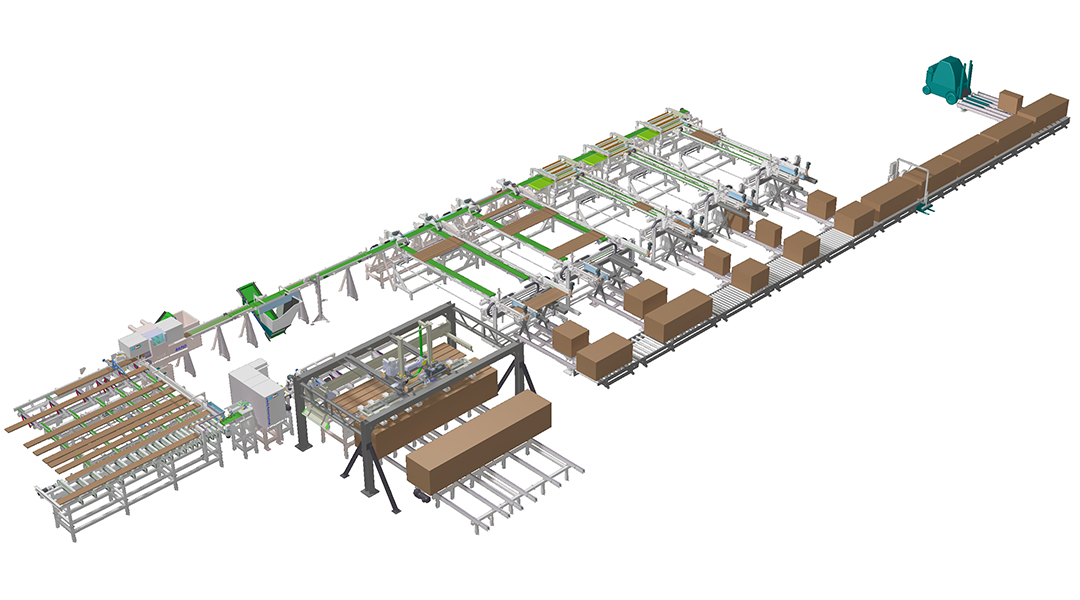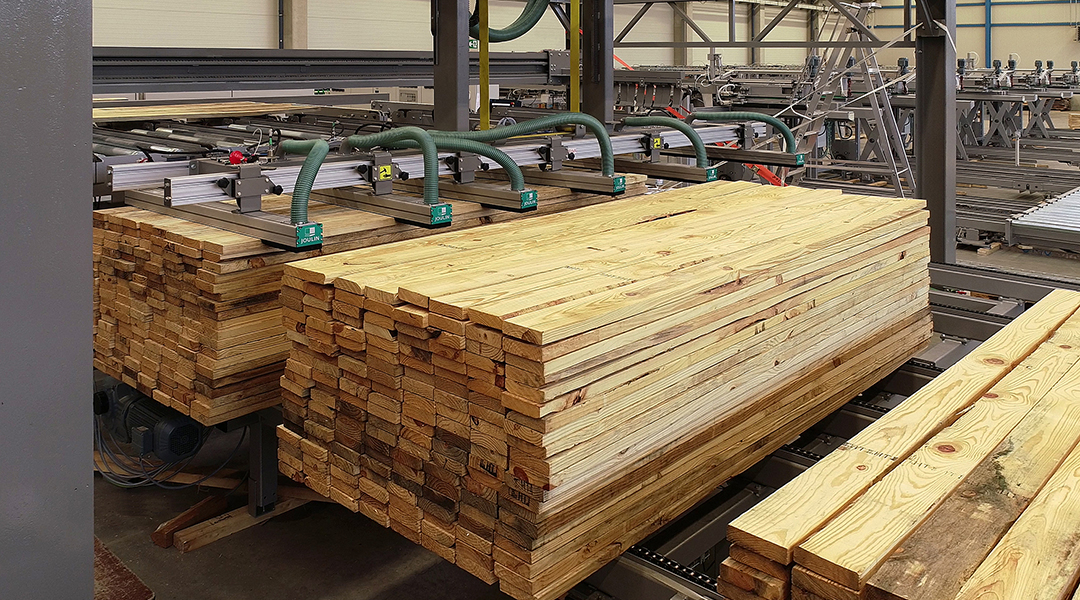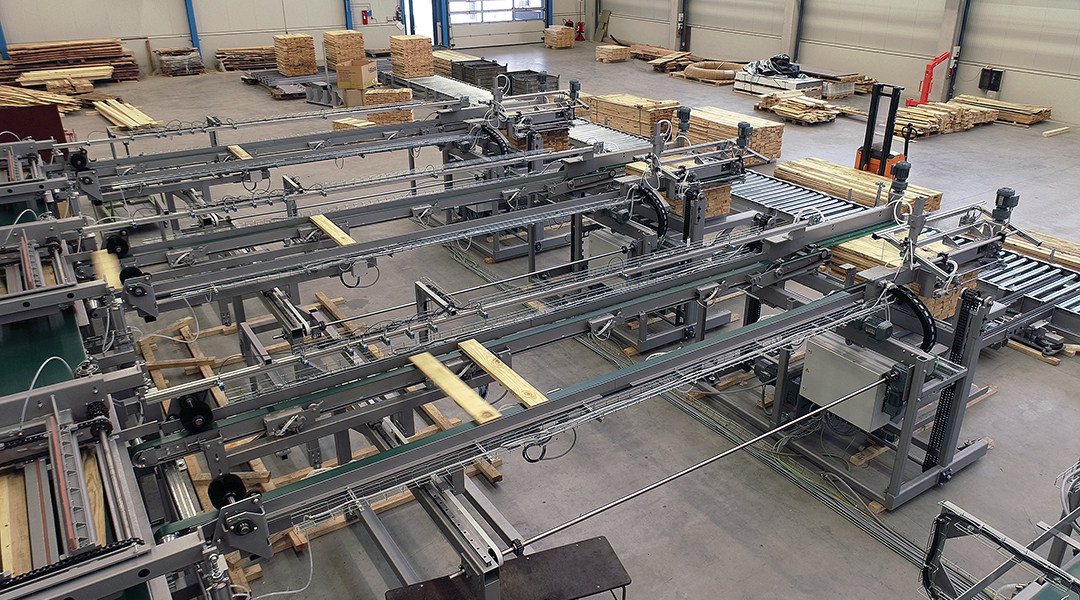 The complete line with vacuum destacker, Paul Wood Scanning System, optimized cross-cut saw RAPID and sorting system.
The complete line with vacuum destacker, Paul Wood Scanning System, optimized cross-cut saw RAPID and sorting system.
At the beginning of the year, Paul Maschinenfabrik (Dürmentingen/Germany) delivered a fully automatic optimizing cross-cut system for the production of large wooden cable drums to North America. The Southern German mechanical engineering company not only took over the overall planning, but also supplied most of the system, transport and mechanization components. In this demanding task, the company was able to demonstrate its extensive know-how and many years of experience in plant engineering. "Despite a relatively tight delivery schedule, we were able to complete the line on time," says a satisfied Paul. The American customer produces packaging and industrial products for well-known brands in various industrial sectors worldwide.
At the beginning of the production process, a vacuum destacking system transfers the timber packages to the system in layers. The workpieces have a length of between 1,220 and 6,100 millimeters. They are then fed individually to the Paul Wood Scanning System and detected using colour cameras, line lasers and point lasers. In addition to geometric deviations and timber characteristics, the system also detects small cracks, resin pockets, blue stain, brown rot and much more. These surface structures are very valuable for automatic classification and quality assessment. A sophisticated software package calculates the best possible optimization result and ensures the maximization of added value with the greatest possible performance. With the help of the user-friendly software, the operator very easily changes system settings and defines the locations of the defects to be detected. Statistical data provide information about the production process and a complete overview of the material to be processed. The actual cross-cutting process in this system is then carried out by a RAPID high-performance saw. With its two saw blades, it not only cuts the workpieces extremely quickly, but just as precisely, under the influence of the scanner's optimization calculations.
Before sorting, an ink-jet printer marks the individual workpieces with production data for the subsequent process. To increase performance, buffer belt conveyors form the workpiece layers depending on length and quality already before they are transferred to the five automatic stackers. With their infinitely variable adjustment, these stackers adjust themselves fully automatically to the workpiece length. A roller system transports the finished timber stacks for transfer to the forklift driver. Buffer stations at various points of the overall system ensure a continuous material flow, as they reduce the gaps in the incoming workpieces to a minimum and store workpieces for subsequent process steps, among other things. This significantly increases the overall performance of the line.
The manless system, at best, only needs the forklift operator during the entire process, from the raw material feed to the removal of finished stacks. Depending on the length of the material and the number of cross-cutting operations, it enables the fully automatic cutting of about 100 to 140 workpiece packages per shift at an output of up to 95 meters per minute. From these optimized boards, automatic nailing machines then produce the wooden cable drums for many kilometers of cable all over the world.


